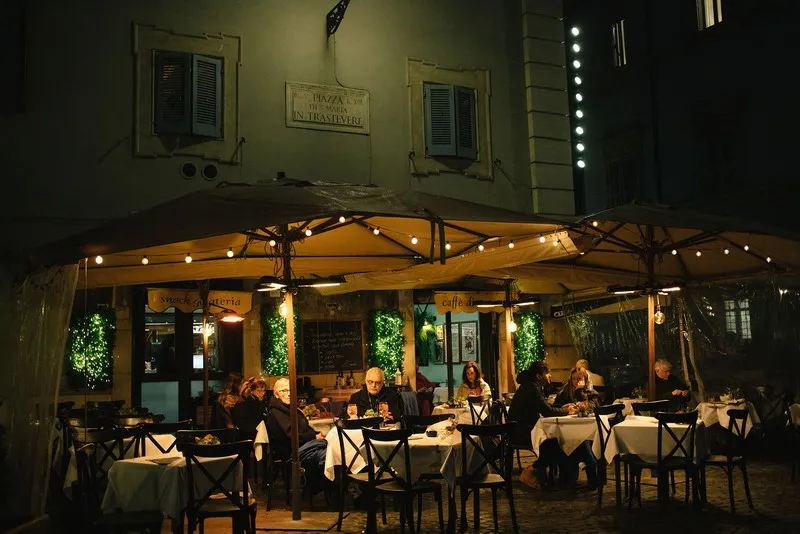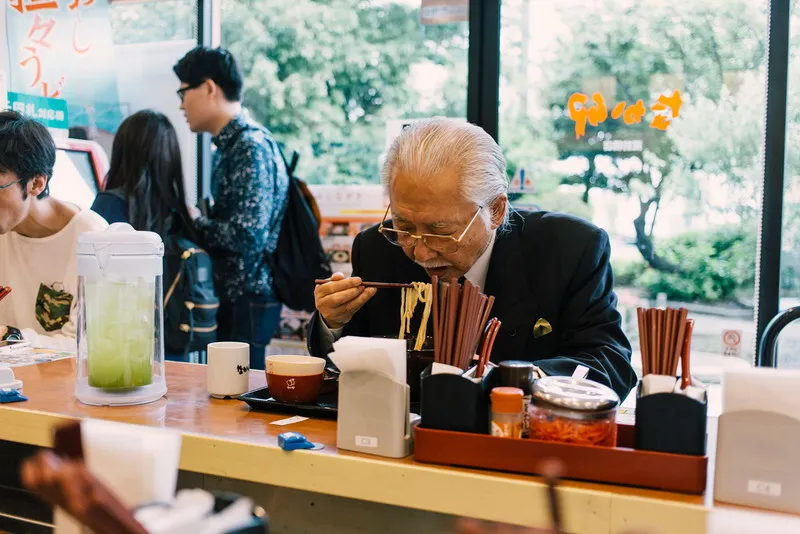As we step further into the 21st century, the world of gastronomy continues to evolve at a rapid pace, shaped by a myriad of factors ranging from cultural shifts to technological advancements. Each year brings its own set of culinary trends, reflecting changing consumer preferences, emerging sustainability concerns, and innovative approaches to food and dining.
Gastronomic trends 2025 promise to be particularly dynamic, with several key trends poised to leave a lasting impact on how we eat, cook, and experience food. From a renewed focus on sustainability and local sourcing to the ongoing exploration of plant-based alternatives and the integration of technology into the dining experience, the year ahead holds exciting prospects for both chefs and food enthusiasts alike.
In this exploration, we delve into some of the most important gastronomic trends shaping the culinary world in 2025, offering insights into the flavors, practices, and philosophies that are set to define the year’s culinary discourse.
Bold food pairing
It’s interesting to try strange flavors separately, but what about unusual combinations? In 2025, many are actively involved in food pairing – looking for ideal gastro pairings for drinks. The purpose of such experiments is to complement and enhance similar tastes, find balance in contrast, or create something completely new from several tastes.
The brightest trend of the year is contrasting combinations, for example, sweet and salty flavors, fish and citrus. There is a risk in such collaborations, but it is rewarded with cool taste discoveries. Therefore, do not be afraid to combine what at first glance seems wild to you.
Sustainability and the climate diet
We are increasingly concerned about how food is produced and how much food is wasted, with an interest in organic foods, innovative agriculture and zero-waste nose-to-tail and leaf-to-root cooking. If you support this trend, in a store or restaurant, pay attention not only to the healthy ingredients and delicious menu. Whenever possible, choose locally grown, ethically and chemical-free produce, and try to put less leftovers into the trash.
Adherents of the climate diet go even further. Climatarians don’t count the calories in their food, but the carbon footprint. They avoid resource-intensive products and those that cause excessive greenhouse gas emissions. Climate nutrition includes local products that do not have to travel long distances to supermarket shelves, as well as organic products from small farms, rather than from mass production. For humans, this means reducing animal protein in the diet, especially beef, as well as lamb, pork and captive-bred fish. Poultry and dairy products are considered less resource-intensive to produce, but they are also more expensive than plant-based foods. So many people go vegetarian or vegan and then cut out avocados, soy and almonds for the same resource-intensive reason.
This trend has led to some restaurants offering climate-friendly menus where dishes are labeled with their carbon footprint. If this type of eating seems too much to you, at least try to avoid overly packaged foods and eat local, seasonal vegetables and fruits more often.
Reductarian diet
Reductarian eating is a style of eating that focuses on limiting animal products in the diet. It is scientifically proven that excessive consumption of meat, especially red and processed meat, has a detrimental effect on human health and the environment. Unlike a radical transition to veganism, reductiontarianism involves thoughtful moderation in relation to food, a smooth movement towards plant-based products.
There are more and more followers of this style of eating. Globally, two-thirds of consumers are very interested in plant-based protein, and a quarter say plant-based protein is more important in their diet than a year ago, according to HealthFocus data from last year. More than 2.5 million people have joined the global Veganuary initiative, which promotes a gentle rejection of animal products. To share the trend, you don’t have to call yourself a reductionist—it’s enough to not give animal proteins a central place in your plate.
Instead of haute cuisine – experiential
The model of fine dining restaurants has turned out to be untenable, as Rene Redzepi, the chef of the most famous fine dining establishment, admitted. Copenhagen restaurant Noma, repeatedly voted the best in the world, will close in 2026. In addition to economic reasons, there was a decline in interest in haute cuisine. Now people are not just looking for expensive and good food, but immersive experiences and interactions. Gourmets are interested in lifting the veil over the preparation of dishes and taking part in the process.
Restaurant guests are ready to cut their own steak or mix their own drink, paying money for it. This is an opportunity to get unusual impressions and new knowledge in addition to food. To join the trend, when traveling, ask locals about a place that offers cooking classes, or ask the bartender for the ingredients and mix yourself a cocktail under the supervision of a pro.
Dinner alone
Thanks to the pandemic, going to a restaurant alone is no longer perceived as something strange and socially unacceptable. Lunching or dining solo is a form of self-care, a way to focus on tastes and textures, and enjoy people watching, music and conversations around you.
Without a companion to entertain, you can immerse yourself deeply in the atmosphere, take off the mask of an amiable interlocutor and be with your thoughts. Or, conversely, start an interesting conversation with a random neighbor at the bar. A solo dinner at a restaurant can be very therapeutic: paradoxically, you feel not alone, but part of a global human community.
Immersive gastro tours
Travelers are looking for an authentic experience with maximum immersion in local culture. One of the best ways to experience it is to try the local food and drinks. But tastings alone are not enough; people are curious to see the entire life cycle of food, to understand the deep-rooted historical connections of its production and preparation.
Tours to farms, craft breweries, family wineries and other traditional industries are becoming increasingly popular around the world. Travelers do not limit themselves to observation – they participate in harvesting, producing food and preparing food. Another way to immerse yourself in food culture is to spend a day with a restaurant’s chef, learning more about the ingredients in each dish and the talented people who worked to prepare it.
Kilometer Zero Kitchen
During the pandemic, hotels and restaurants have begun to reduce their dependence on suppliers by creating their own gardens, orchards and farms within a few kilometers of the kitchen. This way they can receive fresh, seasonal products all year round and control their quality. For example, the chef of the French Grand-Hôtel du Cap-Ferrat planted a terraced vegetable garden on a cliff, which now provides the lion’s share of vegetables for his restaurant.
Another direction of this trend was outlined by the chef of NoMad London – organic farm lunches, focused on vegetables. It’s not just farm food served in a restaurant, but the restaurant itself as an interactive farm. There you can learn how and what grows, and then create a menu based on seasonal ingredients.
Extreme tastes
The world is experiencing a boom in strange tastes. People are looking for bright, rich tastes – spicy, sour, spicy. The top products include pickled cucumber and brine flavors: last year, online searches for them increased by 55%. People are also attracted to kimchi, beet kvass, beer, tempeh, hot peppers, spicy honey, and seaweed.
Startup Umaro Foods has created bacon made from kelp seaweed that closely resembles pork in both taste and crispy texture. Hot peppers are now included in everything from chips to honey. Spicy honey in the States has become a favorite sauce for pizza, appetizers, and fried meat, and this fashion has already spread to Europe.
Functional foods
According to HealthFocus, there is a growing global interest in functional foods that provide additional health benefits beyond nutritional value. The trend is primarily related to the recovery from COVID-19. People need foods for immunity and performance, increased mental energy, improved mood, relaxation and sleep.
These are fermented foods with pre- and probiotics, such as sauerkraut, pickles, yogurts, drinks with added electrolytes, minerals, vitamins and fiber. At the height of culinary fashion is tepache, a fermented Mexican drink made from pineapple peel. Judging by the popularity on social networks, this will be the new kombucha. By the way, you can prepare this Mexican kvass at home: there are plenty of recipes online.
Ancient grains
These are grains that have remained virtually unchanged over the past few hundred years. Their value lies in their high content of protein, fiber, vitamins and minerals. Many are gluten free. Among the ancient grains are amaranth, sorghum, millet, teff, rye, buckwheat, and barley.
These grains are used as substitutes for wheat flour, served as a side dish instead of the usual pasta or rice, and added to soups, stews and salads. Why not diversify your diet? 2025 was even declared the International Year of Millet to better inform people about its beneficial properties and ease of cultivation.
Canned food
The global cost of living crisis is affecting shopping habits and people are paying attention to affordable products. Sales of canned food are booming in supermarkets, and celebrity British chef Jamie Oliver has teamed up with Tesco to create a range of affordable in-store meals. He included canned chickpeas, beans and other legumes as the main ingredients.
However, canned food is not always about saving money. The popularity of canned seafood has skyrocketed on TikTok: octopus, squid, mussels, mackerel and others. They are spread on crackers, added to salads and made into sandwiches. A bar has even opened in Los Angeles, Kippered, which specializes in canned fish and champagne.
Mushrooms
The mushrooms’ impressive rise began last year and continues this year. More and more restaurants are including them on menus due to their rich umami flavor, low environmental impact, and low cost.
In addition to the usual champignons, oyster mushrooms and shiitake, new types of mushrooms such as maitake are appearing. These Japanese mushrooms taste like chicken and add a savory touch to any dish – from a sandwich to a risotto. In a report on global trends Af&Co and Carbonate, maitake is called the main dish of 2025.




